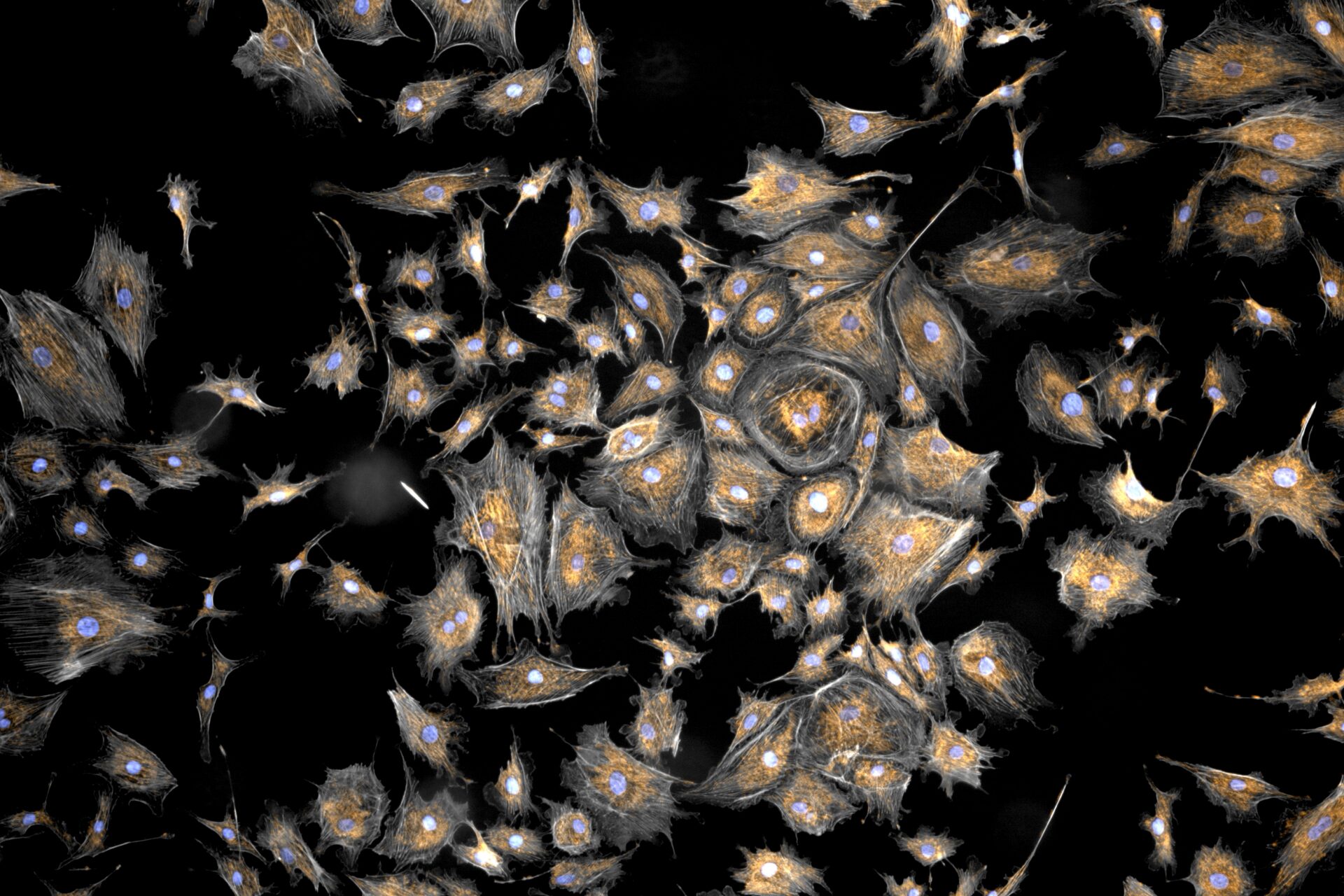Life science researchers are under increasing pressure to deliver more accurate results in less time as datasets grow larger and experimental complexities increase. AI and automation technologies are empowering researchers to meet these challenges head-on, streamlining workflows while enhancing the precision of their findings.
At Media Cybernetics, we’ve worked closely with labs and research teams to explore how AI and automation can make a significant impact. Below are four key strategies that labs are implementing to improve both efficiency and accuracy in life science, speeding up the path to groundbreaking discoveries.
When your analysis delivers reliable accuracy, your lab’s efficiency follows.
Nick Beavers
CEO of Media Cybernetics
1. Deep Learning Enables Smarter Segmentation
Traditional image analysis methods, such as manual tracing and intensity thresholding, are time-consuming, inflexible, and prone to variability between images.
In contrast, deep learning models automatically learn complex patterns from images, enabling researchers to achieve higher accuracy with less manual effort.
These AI models mimic how the human brain recognizes patterns, allowing them to identify objects even when edges are dim or complex. As a result, even the most intricate boundaries can be traced with impressive precision.
 With AI Deep Learning
With AI Deep Learning
 Without AI Deep Learning
Without AI Deep Learning
Why it’s a game-changer:
- Improves accuracy while reducing error
- Adapts to the complexity of biological structures
- Saves time and requires less effort
By integrating deep learning into daily workflows, researchers can gain significantly faster and more reliable analysis.
2. Pre-Trained Models Give a Head Start on Complex Datasets
Building AI models from scratch can be a resource-intensive and time-consuming process. Pre-trained models offer a faster, more efficient alternative by allowing researchers to apply previously trained AI to new datasets—streamlining the early stages of analysis.
What are pre-trained models?
Pre-trained models are AI models that have already been trained on a set of labeled data to recognize specific patterns or features. Instead of starting from scratch, you input your layers and labels to teach the model what to look for. Then, when you introduce a new image, the model uses what it has learned from the previous training to identify similar features—saving time and improving consistency in analysis. If the model initially misses a few objects of interest, a simple “human-in-the-loop” training step can quickly refine its accuracy, minimizing the need for extensive retraining.
The benefits:
- Accelerates image processing while ensuring accuracy
- More consistent results across images and users
- Customizable to meet specific research needs
Beyond saving time, pre-trained models also lower the barrier to entry for applying AI, enabling researchers without deep machine learning expertise to benefit from advanced algorithms.
These models are often fine-tuned to boost accuracy and performance when adapted to new scientific applications, making them especially valuable in research environments where speed, precision, and scalability are critical.
3. Standardized Workflows Ensure Consistency Across Teams
Any researcher who's handed off a project—or tried to replicate older work—knows how tricky consistency can be.
That’s why standardized analysis protocols are becoming essential. With clearly defined workflows for segmentation, measurement, and reporting, labs ensure everyone follows the same procedures.
Whether it’s a new grad student or a senior researcher, the process stays the same—and so do the results.

What it means for the lab:
- Provides more consistent, accurate results
- Increases efficiency across teams
- Simplifies collaboration and speeds up onboarding
With tools like Image-Pro AI, researchers can easily build and distribute analysis protocols, ensuring consistency and reducing uncertainty in daily image processing tasks.
4. Integrated Data Visualization Speeds Up Decision-Making
Manually preparing reports can drain valuable time and affect the speed of decision-making. Automated tools that integrate data visualization and reporting features not only streamline the process but also maintain the accuracy of the data presented.
Why it matters:
- Simplifies data interpretation
- Ensures more accurate data presentation
- Frees up time for critical research
End-to-end solutions that work together seamlessly enable researchers to spend more time on analysis and less on formatting.
Supporting Scientific Innovation Through Smarter Tools
At Media Cybernetics, we’re dedicated to developing tools that help researchers work more efficiently, achieve higher accuracy, and accelerate the pace of scientific discoveries.
As research demands evolve, efficiency and precision have become essential to driving life science discoveries forward. By leveraging deep learning, pre-trained models, standardized workflows, and automated reporting, labs can expedite results while ensuring the reliability and accuracy of their findings.
See These Strategies in Action
Want to dive deeper into these strategies? Watch our webinar to see these strategies in action and visualize how AI and automation can transform your life science research workflow!

![[Webinar Replay] 4 Strategies to Improve Accuracy & Efficiency for Life Science Research [Webinar Replay] 4 Strategies to Improve Accuracy & Efficiency for Life Science Research](https://mediacy.com/wp-content/uploads/2025/03/4-strategies-TO-improve-2-1-700x450.jpg)


Media Cybernetics
sales@mediacy.com
Related Links